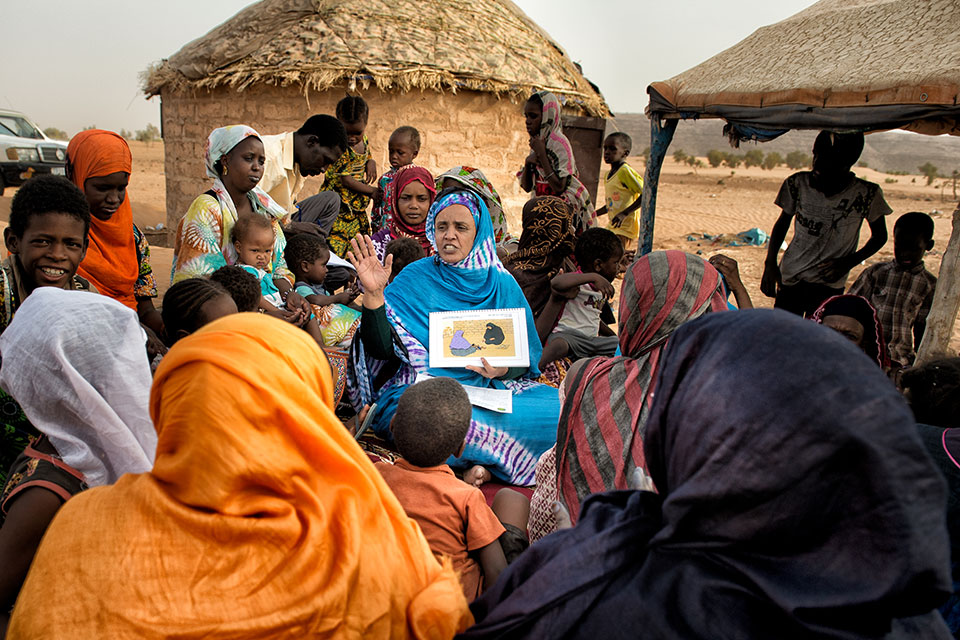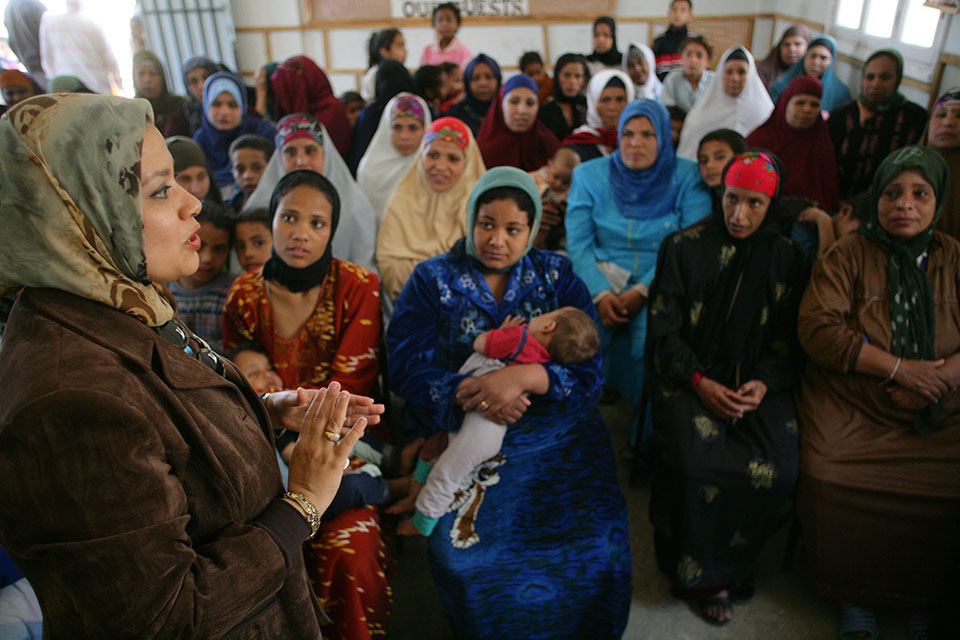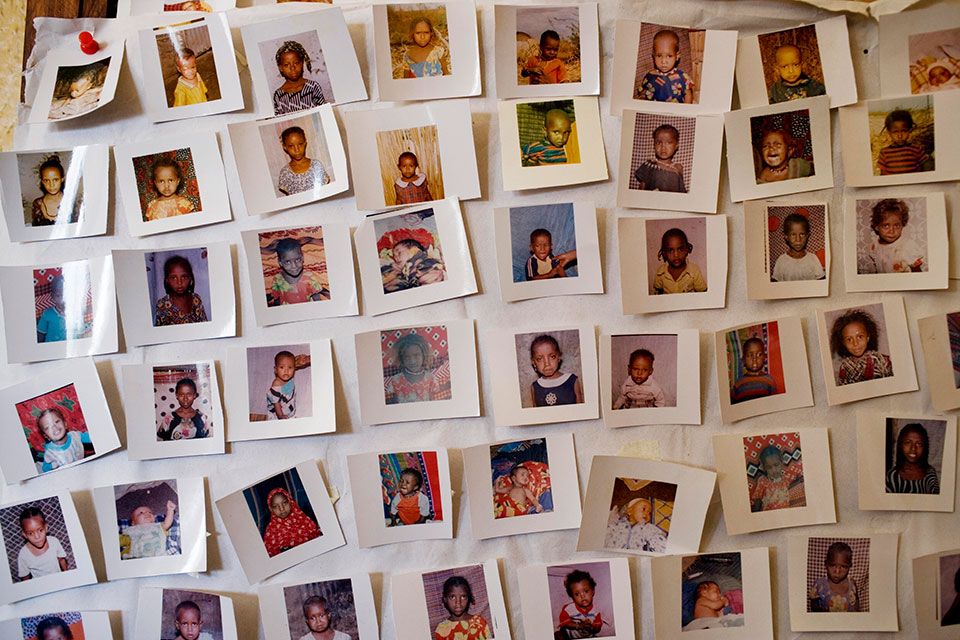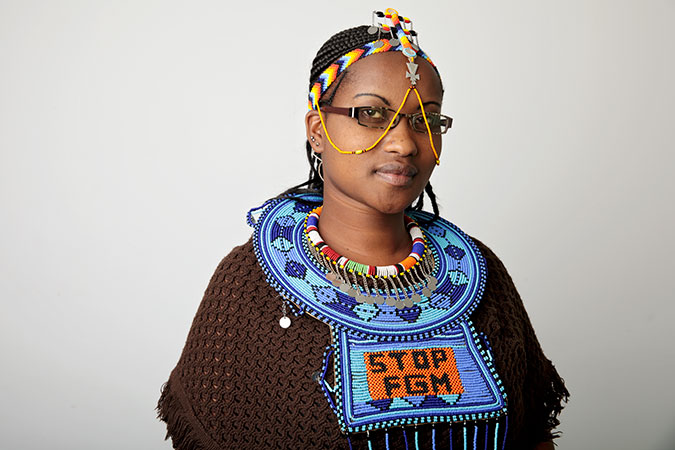Looking back and pushing forward: the global fight to end FGM
Date:
Originally published at Medium.com/@UN_Women

Each year, approximately four million girls undergo female genital mutilation (FGM), a harmful practice that intentionally alters or causes injury to the female genital organs for non-medical reasons.
FGM is pervasive and devastating; there are more than 200 million survivors from 30 countries alive today, and the economic, physical, emotional, sexual and health consequences of the practice can last a
6 February is the International Day to End Female Genital Mutilation and a new opportunity to put an end to this harmful practice. Together we can #endFGM. pic.twitter.com/qwHUBJYykS
— UN Women (@UN_Women) February 3, 2020
FGM is a deeply-rooted, complex issue, but bold action has been taken, and continues, to eliminate it.
Decades of heroic activism, research, legislation, and international cooperation has made significant progress to end FGM.
We need continued, coordinated efforts, led by survivors and their communities, to uproot the practice.
On International Day of Zero Tolerance for Female Genital Mutilation, 6 February, take a look at how action and understanding around FGM has evolved in recent decades, take stock of global trends and progress, and amplify the voices of survivors and activists the fight.
Evolving frameworks and continuous research
Although the origins of the practice are unclear, FGM has been followed by many different peoples and societies across time and space. The practice is thought to be over 2,000 years old, and has been reported in almost every region of the world.
FGM was officially recognized as a form of violence against women and a violation of human rights in the 1993 Declaration on the Elimination of Violence against Women.
In 1995, the Beijing Declaration and Platform for Action advanced the international community’s commitment to ending FGM by pledging governments’ support to enact and enforce anti-FGM legislation and to assist non-governmental, community, and religious organizations’ efforts to eliminate it.

Throughout the 1990s and 2000s, FGM continued to be emphasized in international frameworks, rallying coordinated action to stop the practice, and in 2012, the United Nations General Assembly unanimously adopted the first-ever resolution against FGM.
Opposition to FGM at the international level has been strengthened by rigorous, context-specific research on its underlying factors and far-reaching consequences. According to the World Health Organization, the most commonly cited reasons for practicing FGM include the social pressure to conform to what others do and have been doing, beliefs that being cut increases marriageability, and the misconception that FGM isa religious practice.
Although no religion promotes or condones FGM, it is often perceived as being connected to Islam. However, not all Islamic groups practice FGM and many non-Islamic groups do, including Christians, Ethiopian Jews, and followers of certain traditional African religions.

FGM is a cultural practice, rooted in inequality and discrimination against women and girls. In some places, FGM is seen as part of a girl’s initiation into womanhood and an intrinsic part of a community’s heritage.
“FGM is not about religion. It’s not about class. It’s not about education. I’ve seen some of the most educated people practice FGM because they believe it’s their culture,” says Jaha Dukureh, UN Women Regional Goodwill Ambassador for Africa and an activist leading the movement to end FGM and child marriage.
Research has also revealed intricate connections among FGM and various socioeconomic and health outcomes: it is often a precursor to early marriage, which usually ends a girl’s education; girls living in rural areas are more likely to undergo FGM than those in urban areas; and it increases risk of HIV transmission, and long-term consequences include psychological trauma, complications in child birth, anemia, and more.
Understanding these causes, consequences, and complexities, together with the landmark international agreements, have led to invaluable insights and powerful tools to push for a world without FGM.
For information on who performs FGM, the various types, and more, check out UNFPA’s FAQs on FGM.
Progress and trends in global FGM practices
Overall support for FGM is decreasing, even in the countries where it’s almost universal. There are positive signs of generational changes in the practice: globally, women aged 15–19 years are less likely to have been subjected to FGM than women in older age groups, indicating that the practice is on the decline, and more girls and women are opposed to FGM today than in the past.
Many governments have taken important steps to stamp it out. At least 59 countries have passed laws against FGM, including 26 of the 29 African countries where FGM is most concentrated. However, several states where the practice is rampant, still lack legislation, and even in places where the practice has been outlawed, enforcement is weak and prosecutions are rare.
Furthermore, in the countries where it is most prevalent, populations are growing–and along with them, the number of girls at risk.
There’s also concerning evidence that in some countries, girls are undergoing FGM at even younger ages than before, and that medicalization of the practice is on the rise. Trained health-care personnel have carried out more FGM operations in recent years, which normalizes the practice and hinders long-term efforts to eliminate it.
While undeniable progress has been made, rates are not declining fast enough. An estimated 68 million girls are at risk of being mutilated by 2030.
Awareness and advocacy starts with you. Speak out using #endFGM on social media to make it known we must end this harmful practice.
Visit UNFPA’s FGM dashboard for the most up-to-date information on FGM prevalence and practice.
Survivors leading the movement to end FGM
Across the world, survivors are breaking centuries of silence and speaking up against FGM. Their unity is powerful, and their demands are clear.
“Whether it is broadcasted on the radio, television, or spoken by Afars, the message is to stop FGM,” says Khadija Mohammed, a survivor and activist in the Afar region of Ethiopia. She explains that FGM was, “our culture in our area, and we are trying to put an end to it, step by step.”
Continuing with conviction, she makes clear, “Unless we stop this, the next generation might also practice FGM. We must stop it here.”

Purity Soinato Oiyie’s call for abandonment is just as direct as Khadija’s; she wears a bold, beaded necklace that reads, “Stop FGM.”
Purity was 10 or 11 when her father decided to cut her, but she was able to escape and now works to help raise awareness about FGM’s harmful consequences in her region.
“I go to the schools and talk to the girls and the teachers, I talk to the Maasai people in our language. I show them videos of FGM, make them aware of its effects, and tell them about the importance of education,” she shares.
Strengthened by their own experiences, survivors and affected community members have the power to affect long-lasting change by dismantling permissive cultural narratives and finding collective solutions to end the practice. Their fervent fight for a world without FGM is both for the girls they were and the girls of tomorrow.
“We deserve this right,” says Purity. “It’s ours.”
Watch videos on the women leading efforts to abandon FGM in the Afar region of Ethiopia and read interviews with survivors whose groundbreaking activism is bringing positive change in their communities.